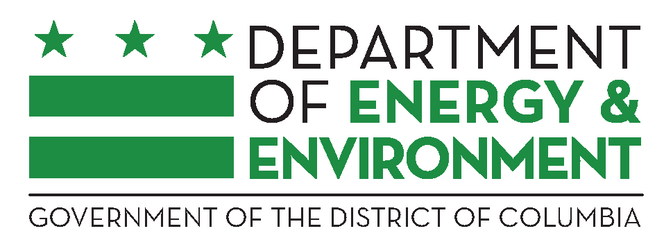Sam Sep 30 2024 at 12:32PM on page 13
Warning message
The installed version of the browser you are using is outdated and no longer supported by Konveio. Please upgrade your browser to the latest release.Racial Equity Action Plan
Public input will guide how this plan changes year to year and will serve as valuable advice on how the DC Department of Energy and Environment can improve public service delivery to residents regardless of race, income, or background.
- The plan includes 18 actions to stregthen community bonds, develop and support staff, and improve accountability on environmental justice and racial equity goals. Feedback on these actions (starting page 11) is especially needed.
- Which actions work well, which could be improved or changed, what is missing, and are there different performance measures that should be considered?
- Registering your email is not required to leave a comment. Do register your email if you would like the option of updating your comments later or recieving updates.
Commenting is closed for this document.
Sam Sep 30 2024 at 12:31PM on page 13
Sam Sep 30 2024 at 12:30PM on page 13
Sam Sep 30 2024 at 12:29PM on page 11
Andrew Sep 20 2024 at 1:50PM on page 13
Andrew Sep 20 2024 at 1:48PM on page 13
Andrew Sep 20 2024 at 1:47PM on page 13
Andrew Sep 20 2024 at 1:39PM on page 16
Andrew Sep 20 2024 at 1:36PM on page 15
Andrew Sep 20 2024 at 1:34PM on page 15
Parker Griffin Sep 18 2024 at 10:17AM on page 14
Parker Griffin Sep 18 2024 at 10:13AM on page 12
Parker Griffin Sep 18 2024 at 10:09AM on page 11
Caleb Rossitert Sep 12 2024 at 3:19PM on page 1
As I wrote in the Fall 2021 Palisades Conduit (link) the DC Public Service Commission identified $65 million in annual net zero costs in 2020. Then the mandate was only for 20 percent carbon dioxide offsets from wind and solar firms, but it is set to rise. to 100 percent by 2032.
Net zero, as Steve Koonin says so eloquently in this debate video, is
* scientifically unjustified (extreme weather events that could harm people or the economy are no more prevalent in the 70 years since 1950, when industrial emissions began to contribute to warming, than in the 70 years before that, when the rate of warming, all natural, was the same),
* immoral (because higher energy costs increase mortality directly by forcing poorer people to cut back on heating and cooling, and indirectly by hampering economic growth),
* and a techno-economic fantasy.
Check it out at link
With all best wishes and hopes for an end to the climate religion madness! Caleb S. Rossiter
Institute for Racial, Ethnic and Socioeconomic Equity - GWU Aug 28 2024 at 1:45PM on page 5
Example measures include not just reductions in asthma (mold exposure and particulate air pollutants) but also increase in attendance (school) and overall physical fitness for school children.
For community level measures-- we can look at exposure to pollutants AND increase in viable green spaces that can contribute to reduction of heat islands (trees per sq mile).
In short, benchmarking needs to give us a framing for success that goes beyond measuring what we want to remove. Equity requires that we measure the presence of investments and resources in place and by race that contribute to wellbeing.
Institute for Racial, Ethnic and Socioeconomic Equity - GWU Aug 28 2024 at 1:34PM on page 2
Sebrena Rhodes Aug 26 2024 at 6:18PM on page 4
DC Initiative on Racial Equity Aug 14 2024 at 12:52PM on page 14
DC Initiative on Racial Equity Aug 14 2024 at 12:51PM on page 13
DC Initiative on Racial Equity Aug 14 2024 at 12:49PM on page 12
DC Initiative on Racial Equity Aug 14 2024 at 12:47PM on page 11
DC Initiative on Racial Equity Aug 14 2024 at 12:44PM on page 6
DC Initiative on Racial Equity Aug 14 2024 at 12:42PM on page 3
Andrew Held Aug 9 2024 at 1:41PM on page 5
Andrew Held Aug 9 2024 at 1:41PM on page 12
Andrew Held Aug 9 2024 at 1:40PM on page 12
Andrew Held Aug 9 2024 at 1:39PM on page 12
Andrew Held Aug 9 2024 at 12:12PM on page 9
Andrew Held Aug 9 2024 at 12:10PM on page 2
Anacostia Parks & Community Collaborative (APACC) Aug 7 2024 at 1:11PM on page 13
Anacostia Parks & Community Collaborative (APACC) Aug 7 2024 at 1:09PM on page 13
Anacostia Parks & Community Collaborative (APACC) Aug 7 2024 at 12:16PM on page 14
Is there a comprehensive list available for the public?
Anacostia Parks & Community Collaborative (APACC) Aug 7 2024 at 12:12PM on page 13
Anacostia Parks & Community Collaborative (APACC) Aug 7 2024 at 12:10PM on page 7
Janani Aug 5 2024 at 3:52PM on page 7
Ben Jul 24 2024 at 11:26AM on page 1
Ben Jul 24 2024 at 10:47AM on page 14
Ben Jul 24 2024 at 10:43AM on page 14
Kelsey Johnson Jul 24 2024 at 10:43AM on page 14
Ben Jul 24 2024 at 10:42AM on page 14
Ben Jul 24 2024 at 10:40AM on page 13
Ben Jul 24 2024 at 10:38AM on page 12
Ben Jul 24 2024 at 10:34AM on page 11
Ben Jul 24 2024 at 10:29AM on page 5
Oana Leahu-Aluas Jul 23 2024 at 3:48PM on page 13
Anna Roblin Jul 20 2024 at 2:32AM on page 14
Anonymous Jul 16 2024 at 12:42PM on page 13
Anonymous Jul 16 2024 at 12:38PM on page 13
Anonymous Jul 16 2024 at 12:08PM on page 13
jininberry Jul 10 2024 at 5:01PM on page 13

Comments
Close